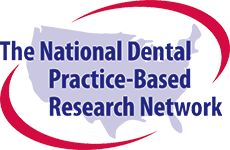Précis & Objective
Précis
A target of 1,000 men and women aged 30-69 years were enrolled over a 6-month period, with up to 1,200 enrollments allowed to avoid cutting off enrollment in the middle of a business day. Thirty practice locations were recruited from the 6 National Dental PBRN regions (5 practice locations per region). Participating patients were recruited during routine clinical visits with participating National Dental PBRN practitioners. Each practitioner recruited 25-30 patients. Patients were provided with a tablet computer on which the study was explained, electronic consent was obtained, patient eligibility was assessed, an oral HPV risk factor survey was administered, and patient selection for oral rinse collection was determined. Based on survey responses, the top three deciles of risk (~300) and a random selection of 1 in 12 of those in the lower deciles (~59) were selected for oral rinse collection (~359 total). An oral rinse sample was obtained by means of a 30 second rinse and gargle with ScopeTM mouthwash (or saline), expectorated into a sterile specimen collection cup, sealed and stored at 4°C. Specimens were shipped by practice staff approximately weekly or twice a week to a central laboratory for human papillomavirus (HPV) detection. HPV results were communicated to the dental practitioner through the study’s secure web application. Patients with a high-risk oral HPV infection (anticipated to be ~25 individuals) were offered enrollment into a prospective study inclusive of a blood draw, an oral cancer examination, and a 6-month follow-up dental visit (window: 5-9 months) with a repeat oral rinse and an electronic oral cancer risk factor survey. Patients were compensated with a gift card for each major study procedure.- Objectives
The primary objective of this study were to estimate the proportion of the study population with an oral high-risk HPV infection.The secondary objectives of this study were to:- Evaluate the feasibility and acceptability of baseline study procedures performed by participating patients and staff;
- Measure the distribution of demographic and behavioral characteristics associated with oral HPV infection;
- Determine compliance with and feasibility of procedures performed at a 6-month follow-up visit (window: 5-9 months), including blood draw, second oral rinse specimen collection, oral cancer screening examination, and completion of an oral cancer risk factor survey.
